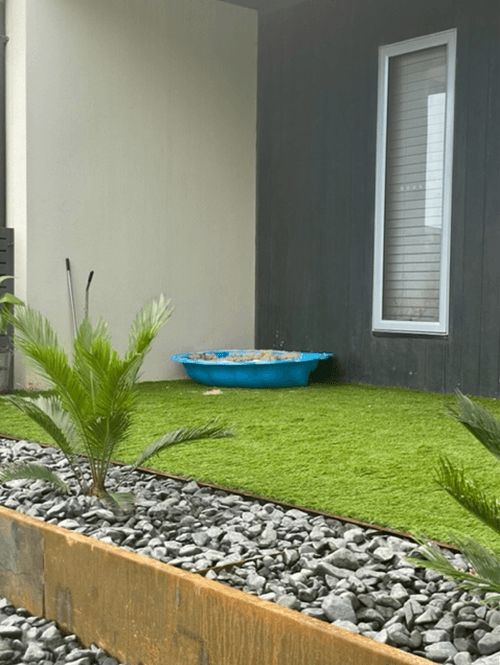- 6th July, 2022
- By Andrea Uren
10 Dog-Proof Landscaping Ideas That Will Make Your Garden Fido Friendly

 | If you have a dog, you know they have the tendency to dig, urinate where they shouldn’t, and tear up plants. But that doesn’t mean you have to give up on landscaping your garden if you have a dog. Dog-proofing your landscaping is about creating a beautiful, enjoyable backyard space that also happens to be resilient enough to stand up to the wear and tear of a rambunctious canine. You can dog-proof your landscaping by choosing non-toxic, hardy plants and materials that discourage digging, chewing, and urinating in certain areas. |
Dog-Proof Landscaping Ideas
A dog-proof garden directs your dog’s attention away from where it shouldn’t be, and toward areas that are designated as dog-friendly. It should take into account the way dogs tend to interact with their environment, such as running along fences and borders and digging in loose soil.
Here are some ways to landscape your garden that take dog psychology into account:
- Use natural barriers to guide behavior. A raised bed or hedging can create a protective but aesthetically pleasing barrier that helps discourage your dog from spending time in certain areas of the garden, such as a flower bed. You may also want to create a natural barrier to direct your dog away from boundary fences where they are likely to run and wear a path.
- Use self-repairing turf such as buffalo grass. Not all grass is created equal, especially when it comes to the ability to bounce back from running, scratching, digging, and urinating by dogs. Buffalo grass is a low maintenance species that spreads both above and below-ground, so it can grow back over damaged areas.
- Create a designated play and digging area. Instead of trying to curb natural dog behaviors, try redirecting them to a specific area. Designating an area where your dog can go wild sniffing, digging, and rolling is one way to confine the damage. Try filling a plastic kiddie pool with sand.
- Use faux turf. Placing faux turf in shady areas will encourage your dog to spend time in these areas during the summer, leaving your real plants untouched. Faux turf makes a low maintenance landscaping alternative to grass.
- Use fencing around your garden beds. Even low, decorative fencing around flower beds can discourage dogs from digging. Natural “fences” of hardy, low maintenance plants can help, too.
- Use pebble “mulch” in garden beds. Small and medium-sized stones are a dog-friendly substitute for regular mulch that help the ground retain moisture and prevent weeds, while discouraging digging.
- Add deck and paving areas. Hardscaping is low maintenance and creates less lawn and garden area for digging. Stone and composite pavers create beautiful, versatile, and long-lasting dog-friendly garden spaces.
- Avoid planting in straight lines. Dogs tend to run along linear barriers and wear a path. Use hedging or other natural barriers to break up your garden area and avoid creating a dog racetrack. “Islands” created by grouping small trees, bushes, and other plants can also help by interrupting your dog’s path.
- Use paving or similar hard surfaces on pathways. Loose pathways created with sand, pebbles, or mulch will create a mess if your dog runs along them. Choose solid pavers that won’t require repositioning.
- Fencing and gates should be solid. See-through fencing encourages your dog to run along the fence, damaging anything planted along it and wearing a track in the grass. A solid fence or gate can help reduce distractions.
Avoid These Plants in Your Dog-Friendly Landscaping
Dog-proofing your landscaping also means keeping in mind that dogs have the tendency to chew and eat things they shouldn’t, including your plants. To be on the safe side, choose dog-safe flowers and foliage and stay away from plants that are known to be toxic to dogs. Some of the most common toxic plants to avoid are:
|
|
If your heart is set on including toxic plants in your landscaping, talk to your landscape designer. They can ensure the design brief makes note that any toxic plants should be planted out of reach of pets.
Need Help Creating a Dog-Proof Garden?
If your Mornington Peninsula home is in need of a beautifully landscaped outdoor space that stays gorgeous no matter how much time your dog spends in it, a professional landscape designer, we can help. We can design a garden oasis using materials that stand up to anything your dog can dish out to keep your garden both enjoyable for you and safe for your pets.
Looking for help with your next landscape design project? Call us for expert advice today.
